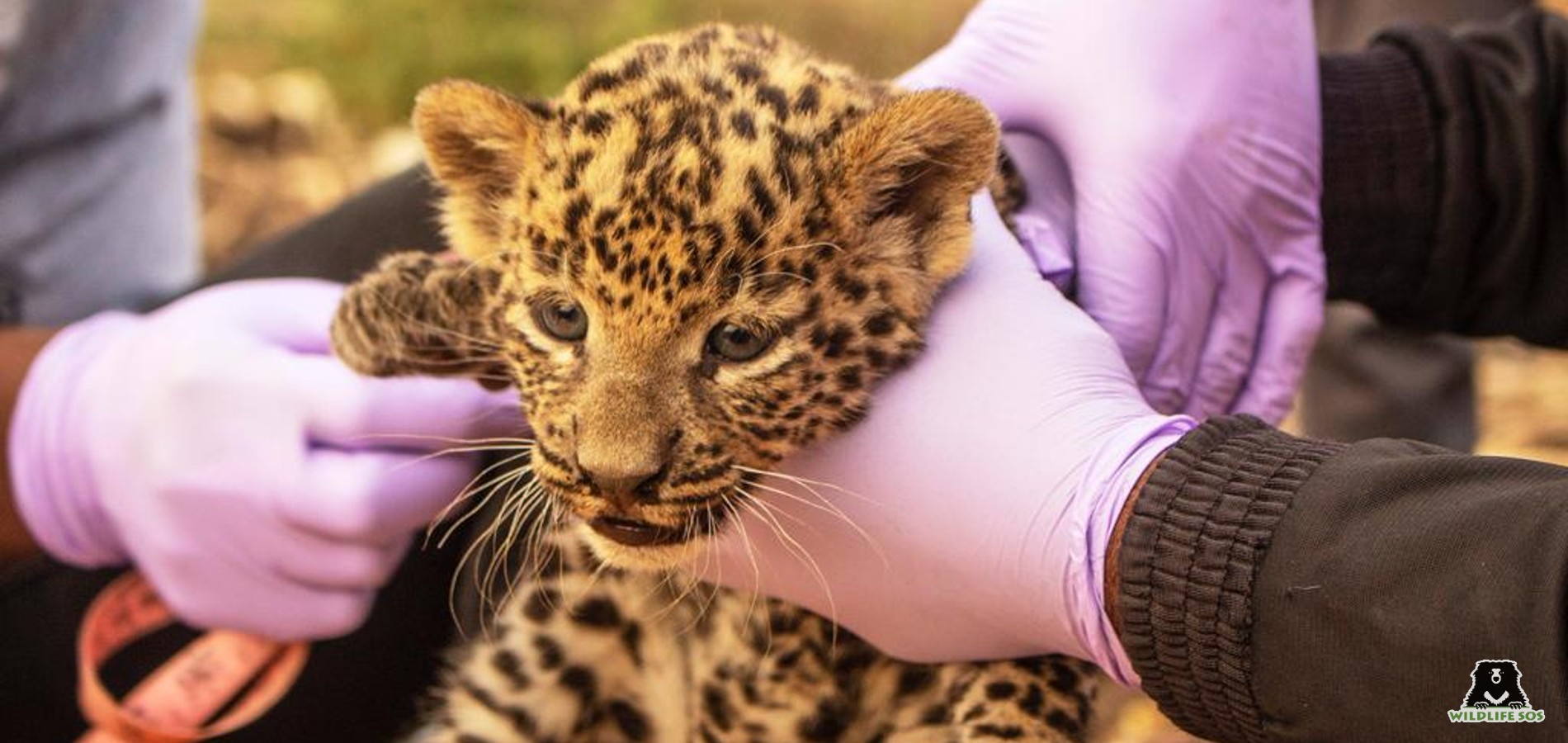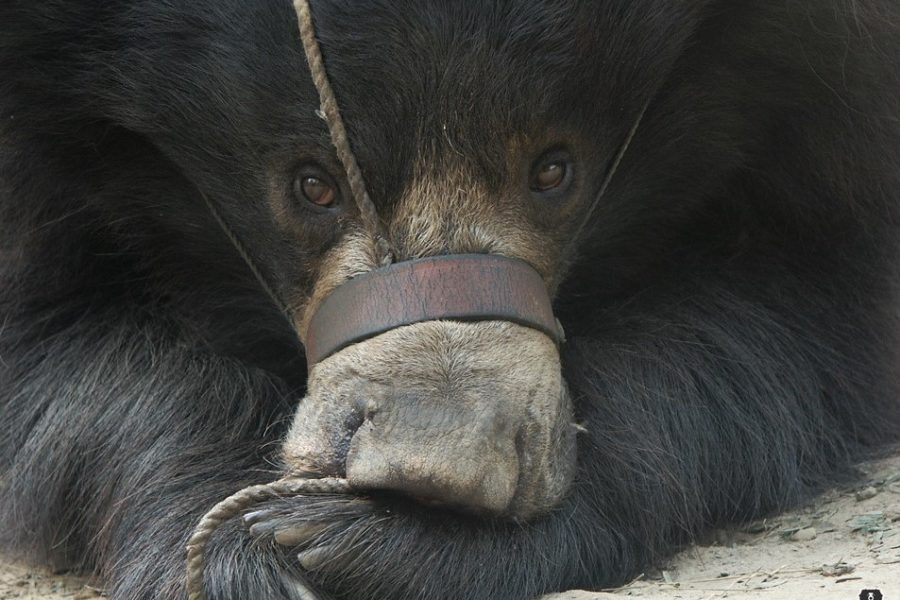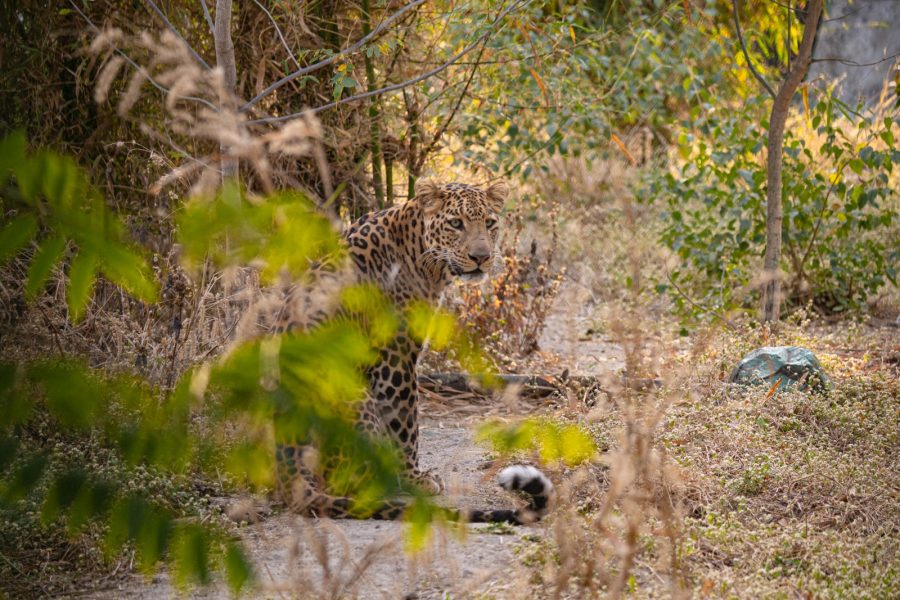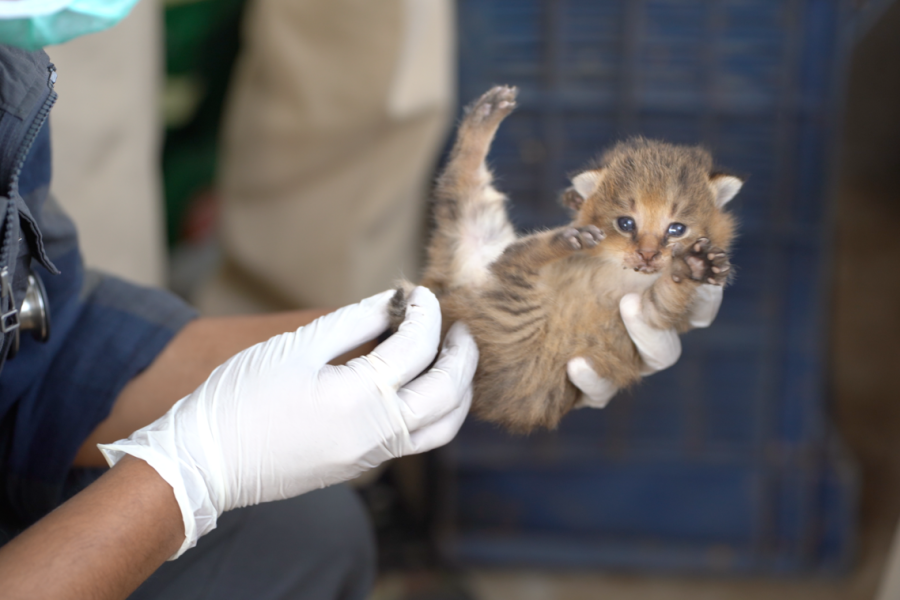After successfully reuniting several leopard cubs in the past month, Wildlife SOS is relieved to announce another fortunate mission. A 3-month-old female leopard cub was recently spotted in a sugarcane field of Rajuri Village, Junnar, Maharashtra. Local farmers harvesting sugarcane from the fields made this observation. Being aware of the need to take quick action, they immediately contacted the concerned authorities who further carried out the diligent operation.
Wildlife SOS team promptly reached the site along with officers from the Maharashtra Forest Department, to facilitate the rescue and reunion operation. Wildlife SOS veterinary officer, Dr. Nikhil Bangar, conducted an on-site medical examination and found the cub to be in good health. Following protocol, the team carefully implanted the cub with a microchip and strategized on reuniting the young leopard with its mother.
The team placed the cub in a safe box and returned to the field where the farmers had discovered it. They also installed camera traps near the box to monitor the reunion process. Within an hour, the mother leopard gently approached the box. After a quick examination, she flipped over the box and ensured that her cub was unharmed. She then carefully picked it up and disappeared into the neighbouring forest patch.
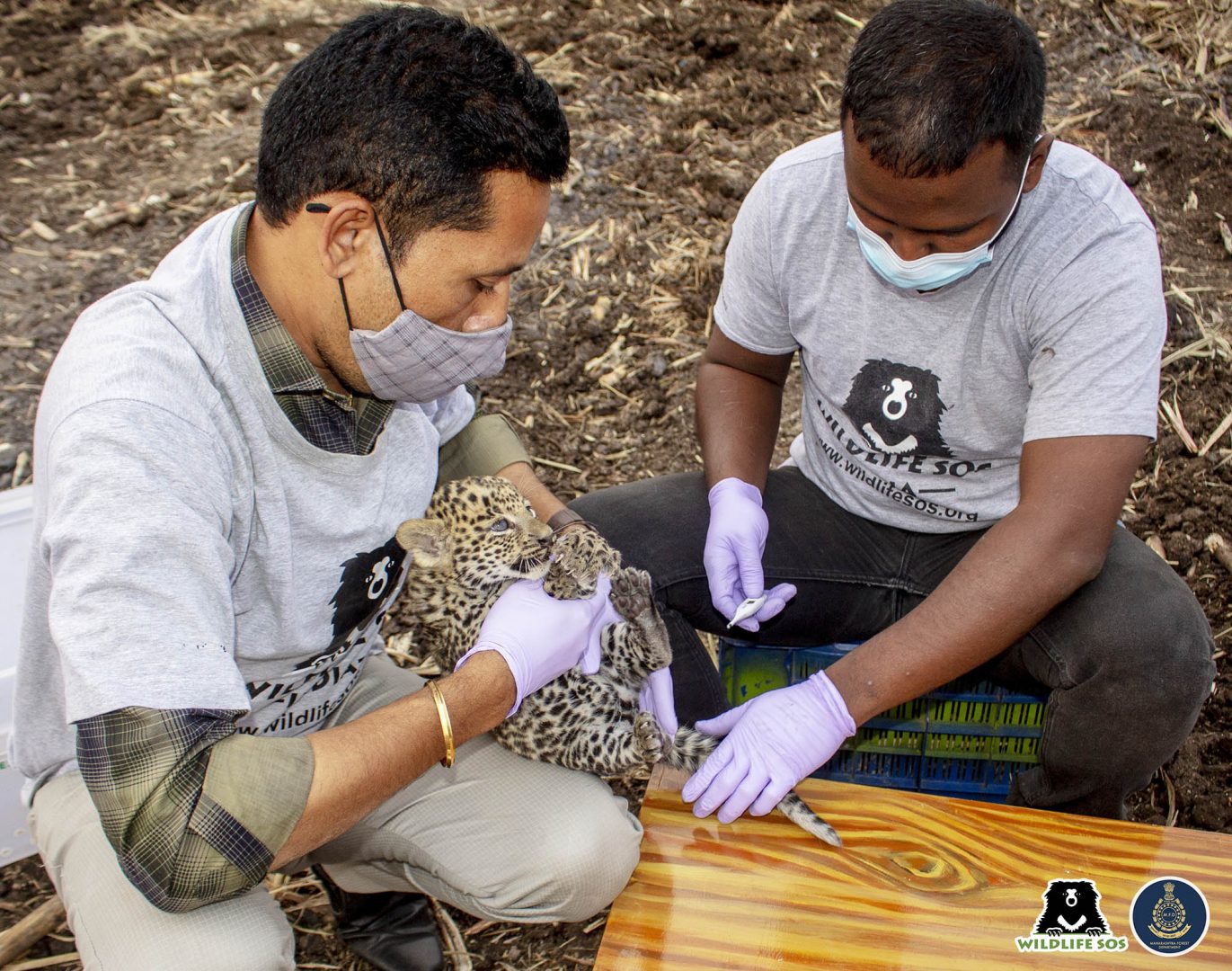
Why do leopards prefer sugarcane fields?
Grown almost throughout the country, sugarcane is a prominent cash crop of India. About 50 million farmers engage in the cultivation of sugarcane, on an estimate. This makes the sugarcane industry a focal point for socio-economic development by generating employment and enhancing the mobilisation of rural resources. The tropical conditions of Maharashtra offer an exemplary environment for sugarcane growth. From December to March, the weather conditions favour sugarcane cultivation. The tall and dense grass of sugarcane offer close to an ideal home to one of India’s big cats – leopard.
Maharashtra is home to a large population of wild Indian leopards (Panthera pardus), who often find a safe abode amongst the tall sugarcane crops. Leopards usually give birth in the refuge of thriving vegetation, where they can easily camouflage. Over the years, they have adapted to sugarcane fields in the region for secured cover and shelter. Although elusive in nature in the wild, leopard cub sightings are significantly high on cultivated lands. While harvesting the sugarcane fields during the season, farmers often encounter helpless leopard cubs.
Why is the leopard mother-cub reunion important?
Leopard mothers wean their cubs till about four months of their initial life. Afterward, they depend on their mother for about 2 years to learn numerous survival skills. Mothers often prowl in search of prey, leaving the cubs in the safety of the sugarcane fields.
Reunions of cubs with their mothers offer them a second chance to thrive in the wild habitats. In case, they are not reunited on time, there are higher chances of the worried mother turning aggressive. This results in human-wildlife conflicts or the mothers may even end up abandoning the cubs when found.
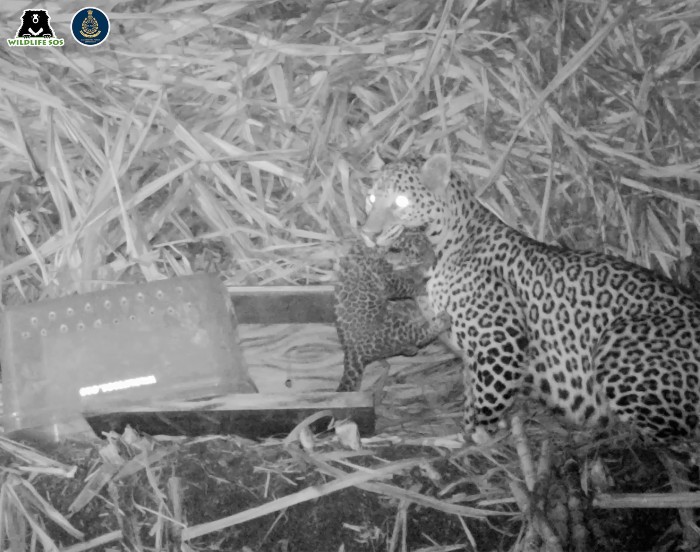
What roles does the local community play in such reunions?
With the frequency at which villagers and farmers come across leopard cubs, they have now become accustomed, especially during the harvesting season. Out of empathy and compassion for wildlife, locals contact the Forest Department and Wildlife SOS to take relevant action. Awareness programs conducted by Wildlife SOS in schools and villages have helped in educating the local communities. Our training staff shares insights on leopard biology, their natural habitat, avoidance behaviours, consequences of conflicts, and co-existence. Understanding that tolerance towards these majestic felines and co-existence is the key to reducing such growing conflict issues. We have also trained the village rescue team to aid us during rescue missions.
Being aware of the urgency of the situation, our team responds promptly to such updates. Such heartfelt reunions bring a sense of relief to us since they vouch for the animal’s survival. We are thankful for the prompt response of villagers and the Maharashtra Forest Department, who contacted the Wildlife SOS team. Our efforts wouldn’t be feasible without villagers’ awareness and fleeting actions.
Help support our leopard rescue and conservation efforts. Consider contributing to our mission: https://give.wildlifesos.org/page/16138/donate/1

